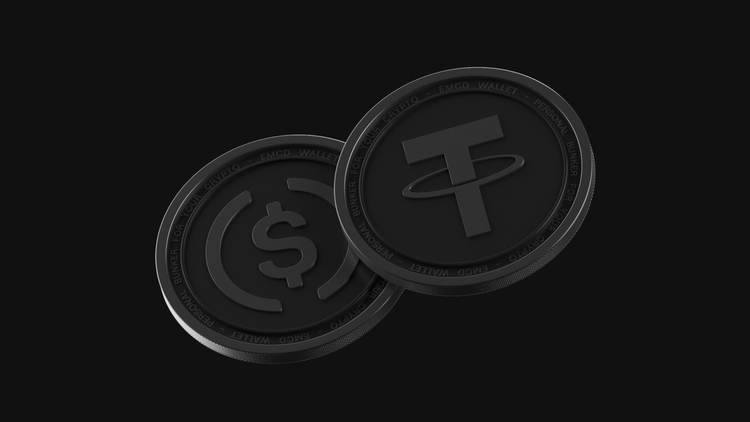Where to Invest Money in 2025: The Best Investment Options

By fall 2025, inflation really has cooled from the 2022 highs. Some central banks have started to cut rates, while others are still waiting to make sure inflation doesn’t bounce back. The overall direction is gentler policy, but it’s far from uniform worldwide. On the other hand, interest rates on deposits and bonds remain noticeably higher than during the ‘zero-rate’ years, providing solid returns on conservative instruments. Against this backdrop, stock markets are near historical highs, bond yields are also elevated, and interest in cryptocurrencies keeps growing. In such conditions, a beginner investor must understand the available investment options — their pros, cons, risks, and prospects.
Bank Products and Deposits
What they are. Bank instruments (savings accounts, deposits) allow you to place money at a fixed interest rate — in other words, you lend money to a bank and receive a pre-agreed return. In most countries, deposits are insured by the government up to a certain amount, making them one of the most reliable ways to preserve savings.
Pros
Reliability and guaranteed income. The risk of losing money on a deposit is minimal thanks to insurance and banking stability. The interest rate is fixed in advance, and the depositor receives income regardless of market conditions
Cons
Low real return. Deposit rates usually only slightly outpace inflation — and sometimes even lag behind. Deposits help preserve purchasing power rather than grow capital. In countries with very high deposit rates, inflation is often equally high — so windfall profits are rare
Outlook for 2025. Deposits remain a core tool for conservative investors. The rate hikes of 2022–2023 made them much more attractive: savings accounts finally pay something again — around 3–4% a year in developed markets. But after inflation, the real profit is close to zero. Deposits are good for safety, not for making money.
Bonds (Government and Corporate)
What they are. A bond is a debt security. Buying one means lending money to a government (sovereign bonds) or a company (corporate bonds) in exchange for regular interest payments (coupons) and the return of principal at maturity. Sovereign bonds of reliable countries (U.S., EU, etc.) are considered nearly risk-free, while corporate ones carry default risk.
Pros
- Predictable income and principal return. Bonds provide stable cash flows — investors know both coupon size and payment schedule
- Higher yields than deposits with moderate risk. High-quality bonds usually pay more than bank deposits, at comparable risk levels
Cons
- Interest-rate sensitivity. When rates rise, bond prices fall: new issues offer higher coupons, making older ones cheaper. Investors holding long-term bonds saw declines in 2022–2023 as rates spiked
Credit risk. Corporate issuers may default. The higher the yield, the higher the risk — ‘junk bonds’ often carry significant default probability. Beginners should stick to reliable issuers or use diversified bond funds
Outlook for 2025. Bonds are back in style. Yields are higher, so investors get steady income again. And if central banks keep trimming rates, older bonds could gain in price — a nice bonus on top of coupons. Bonds remain a solid option for stable interest income rather than rapid growth. New investors should keep part of their portfolio in reliable bonds — directly or via ETFs.
Index Funds and ETFs
What they are. An index fund tracks the composition of a specific market or sector. For instance, buying an S&P 500 fund means investing in 500 major U.S. companies at once. ETFs (Exchange-Traded Funds) are traded on exchanges, and most of them are index-based. Investing via index funds or ETFs offers instant diversification ‘with one click’.
Pros
- Broad diversification with low fees. One ETF purchase gives exposure to dozens or hundreds of companies, reducing individual risks, and fees are minimal
- Accessibility and simplicity. ETFs can be bought through almost any broker worldwide, with low entry thresholds — even $100. No need for deep company analysis: just choose the index (e.g., global equities, tech sector, gold, etc.)
Cons
- Market-average return. By design, index funds never outperform the market — investors get index returns minus a small fee. In bull markets for select stocks, this approach won’t deliver outsized profits, but it also cushions downside risk
Market volatility remains. If the overall market falls, so does the ETF. Diversification protects from single-company failures, but not from global downturns. A long-term horizon and emotional resilience are still essential
Trends. ETFs are still the easiest way to invest without overthinking it. One purchase gives you exposure to hundreds of companies at once. Returns follow the market — no miracles, but fewer surprises too.
Stocks
What they are. A stock represents ownership in a company. Shareholders participate in profits (via price appreciation and dividends) and share business risks. Investing in stocks offers the highest long-term potential returns — but also the highest volatility.
Pros
- Strong capital-growth potential. Historically, stocks outperform bonds and deposits, beating inflation over time. Successful companies can multiply in value and often pay dividends as well
- Liquidity. Stocks can be bought or sold instantly on exchanges. Investors aren’t locked into fixed terms — funds can be withdrawn anytime
Cons
- Volatility and stress. Stock prices can fluctuate sharply — global indices may drop 20% or more, and individual stocks can collapse to near zero. Many beginners panic-sell during downturns
- Knowledge required. Selecting stocks requires understanding companies’ business models and financials. Without research and diversification, losses are likely
Strategy for beginners. Start with a small allocation to individual stocks, keeping most capital in index funds. Focus on large, well-known, financially sound companies from different industries. Hold 10–15 names for diversification and plan to stay invested for years. Avoid short-term trading.
Real Estate and REITs
What they are. Real estate includes residential and commercial property and land. You can invest directly (buy property) or indirectly via REITs (Real Estate Investment Trusts) — companies that own income-producing properties and pay most profits as dividends. REIT shares trade on exchanges, allowing exposure to real estate without owning physical property.
Pros
- Stability and inflation hedge. Real estate prices move slower than stocks, and rental income provides steady cash flow. Property values tend to rise over time, making it a good inflation buffer
Cons
- High entry barrier and low liquidity. Buying property requires large capital or credit. Selling takes time and involves significant costs
- Interest-rate and economic sensitivity. Higher mortgage rates reduce demand and prices. REITs also drop when rates rise, as their dividends compete with bond yields
Outlook for 2025. Housing prices have calmed down since the pandemic spike. Mortgage rates are still high, but if they keep falling, buyers will come back. For easy property exposure, REITs are the simple choice — no tenants, just dividends.
Cryptocurrencies
What they are. Cryptocurrencies are blockchain-based digital assets (Bitcoin, Ethereum, and others). They’re decentralized, globally traded 24/7, and increasingly popular — hundreds of millions already own crypto assets.
Pros
- Potential for outsized returns. The crypto market can grow explosively — Bitcoin multiplied in value many times over the past decade. Crypto can play a venture-style role in a portfolio: high risk, high reward. Buying during dips — such as in October 2025, when Bitcoin dropped over 11% and Ethereum 16% — may offer opportunities
- New income sources (mining, staking). Crypto ecosystems allow passive earnings. Mining rewards participants for securing networks; staking provides interest for locking tokens. Integrated platforms now combine such services. One example is EMCD, a major crypto platform that evolved from a mining pool and now offers a savings service, Coinhold, with yields up to ~13% annually — enabling users to earn not only from price appreciation but also interest on holdings
Cons
- Extreme volatility and lack of guarantees. Prices can swing by tens of percent within days or hours, especially for small-cap coins. Some may lose all value
- Regulatory and technical risks. Legal frameworks remain uncertain in many countries. Governments may tighten rules or impose heavy taxes. Users are responsible for safeguarding their keys — losses from hacks or mistakes are irreversible
Outlook for 2025. Crypto has bounced back since the 2024 halving. Bitcoin’s up, institutions are buying through ETFs, and confidence is slowly returning. But volatility hasn’t gone anywhere — 10% daily swings are normal. Secure storage is critical — platforms like Coinhold are recommended.
Conclusion
In 2025, investors have a wide range of opportunities. The right choice depends on goals, time horizon, and risk tolerance — but diversification remains key. Combine several asset classes: keep part in reliable instruments (deposits, bonds) for safety, and another part in higher-yield, long-term assets (index funds, real estate, crypto). This balance helps both protect and grow your capital. Don’t bet everything on one idea — slow and steady still wins.




